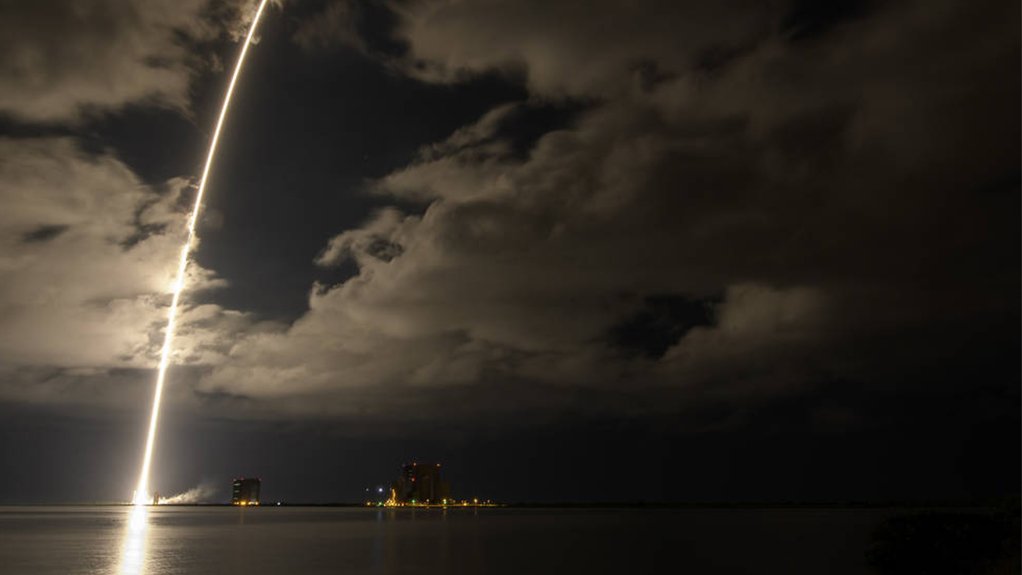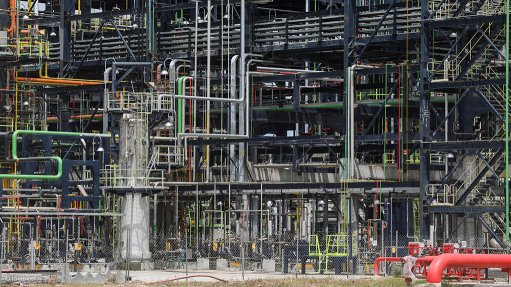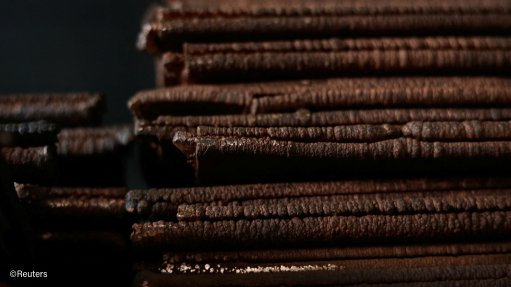Nasa successfully launches new deep space probe, to explore ancient asteroids
The latest deep space mission of the US space agency, the National Aeronautics and Space Administration (Nasa), was successfully launched from the Cape Canaveral Space Force Station in the US state of Florida at 11:34 South African time on Saturday. The launch was conducted by an Atlas V rocket from Space Launch Complex 41.
The spacecraft and its mission are both named Lucy, and the aim of the operation is to fly by eight asteroids, which will make it the first probe to examine so many such bodies. These asteroids will comprise one in the main asteroid belt (which lies between the orbits of Mars and Jupiter), named Donaldjohanson, and seven so-called Trojan asteroids. The Trojans are two groups of asteroids which have the same orbit around the Sun as the planet Jupiter, one group being well ahead of the gas giant world and the other following well behind it.
“Lucy embodies Nasa’s enduring quest to push out into the cosmos for the sake of exploration and science, to better understand the universe and our place within it,” affirmed Nasa administrator Bill Nelson. “A true mission of discovery, Lucy is rich with opportunity to learn more about these mysterious Trojan asteroids and better understand the formation and evolution of the early Solar System,” highlighted Nasa associate administrator: Science Mission Directorate Thomas Zurbuchen.
Scientific data so far collected about the Trojans indicates that they are leftovers of the material that formed the gas giant planets (Jupiter, Saturn, Uranus and Neptune). The data gathered by Lucy will thus provide unprecedented insight into the formation of these giant worlds and the evolution of the Solar System. This is why the spacecraft and mission are both named Lucy, after the fossilised hominid discovered in Ethiopia in late 1974 (one of her discoverers being Donald Johanson, after whom the one main-belt asteroid that Lucy will study was named). In turn, Lucy the hominid got her name from the Beatles’ song, “Lucy in the Sky with Diamonds”.
“We started working on the Lucy mission concept early in 2014, so this launch has been long in the making,” pointed out Lucy principal investigator Hal Levison. “It will still be years before we get to the first Trojan asteroid, but these objects are worth the wait and all the effort because of their immense scientific value. They are like diamonds in the sky.”
Lucy will use fly-bys of Earth to exploit its gravitational field for both acceleration and direction, allowing it to reach the outer Solar System with minimum onboard fuel expenditure. The spacecraft is now moving at some 108 000 km/h and on a course that will loop it around the Sun and bring it back to Earth for its first gravitational boost fly-by, a year from now. This will take it beyond the orbit of Mars, and back again to Earth for its second gravitational acceleration in 2024, which will carry it first to the Donaldjohanson asteroid in 2025, and then on to the Trojan group that precedes Jupiter, reaching them in 2027. It will then fly-by four of these asteroids, before returning to Earth for its third gravitational ‘boost’, in 2031. This will allow Lucy to reach and examine the Trojan group which trails Jupiter, in 2033.
Comments
Press Office
Announcements
What's On
Subscribe to improve your user experience...
Option 1 (equivalent of R125 a month):
Receive a weekly copy of Creamer Media's Engineering News & Mining Weekly magazine
(print copy for those in South Africa and e-magazine for those outside of South Africa)
Receive daily email newsletters
Access to full search results
Access archive of magazine back copies
Access to Projects in Progress
Access to ONE Research Report of your choice in PDF format
Option 2 (equivalent of R375 a month):
All benefits from Option 1
PLUS
Access to Creamer Media's Research Channel Africa for ALL Research Reports, in PDF format, on various industrial and mining sectors
including Electricity; Water; Energy Transition; Hydrogen; Roads, Rail and Ports; Coal; Gold; Platinum; Battery Metals; etc.
Already a subscriber?
Forgotten your password?
Receive weekly copy of Creamer Media's Engineering News & Mining Weekly magazine (print copy for those in South Africa and e-magazine for those outside of South Africa)
➕
Recieve daily email newsletters
➕
Access to full search results
➕
Access archive of magazine back copies
➕
Access to Projects in Progress
➕
Access to ONE Research Report of your choice in PDF format
RESEARCH CHANNEL AFRICA
R4500 (equivalent of R375 a month)
SUBSCRIBEAll benefits from Option 1
➕
Access to Creamer Media's Research Channel Africa for ALL Research Reports on various industrial and mining sectors, in PDF format, including on:
Electricity
➕
Water
➕
Energy Transition
➕
Hydrogen
➕
Roads, Rail and Ports
➕
Coal
➕
Gold
➕
Platinum
➕
Battery Metals
➕
etc.
Receive all benefits from Option 1 or Option 2 delivered to numerous people at your company
➕
Multiple User names and Passwords for simultaneous log-ins
➕
Intranet integration access to all in your organisation





















